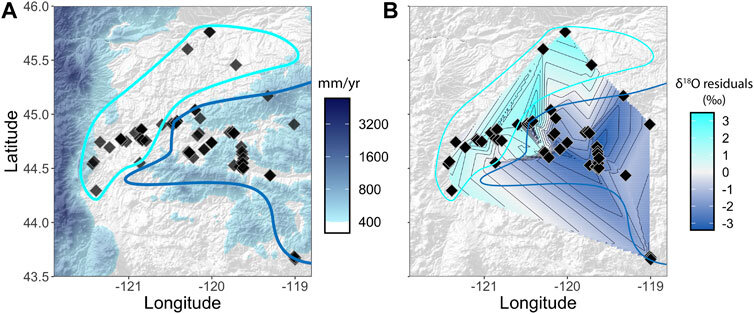High-resolution stable isotope paleotopography of the John Day region, Oregon, United States
T Kukla, DE Ibarra, JKC Rugenstein, JT Gooley, *CE Mullins, S Kramer, *DY Moragne, CP Chamberlain (2021). Frontiers in Earth Science.
*mentee
The John Day region of Oregon—A case study in the coupling of landscapes and life
The John Day region of east-central Oregon hosts one of the most impressive records of Cenozoic climate and life on the planet. It also spans the base of the Blue Mountains which, today, separate dry desert-lowlands from wetter, wooded highlands. If this gradient existed in the past, identifying it would be critical for interpreting the rich fossil record.
How we reconstructed the history of the Blue Mountains boundary
There are no paleosol carbonates in the John Day region for most of the Paleogene, but clays are abundant, usually forming from altered air-fall ash. We collected clays over space and time in the John Day region for oxygen isotope analysis. Since δ18O generally decreases as mountains force rainout (“orographic precipitation”) oxygen isotopes can be used to reconstruct the Blue Mountains boundary through time.
The Blue Mountains have caused a precipitation gradient for at least 50 million years
We find a consistent ~3‰ offset between the high-δ18O lowlands and low-δ18O Blue Mountains since the Eocene. This is unlikely due to later alteration, as both regions record the same δ18O increase across the Oligocene-Miocene. This local, long-lived δ18O gradient can be explained by the Blue Mountains forcing more rainout and/or relatively more winter (low-δ18O) precipitation.



